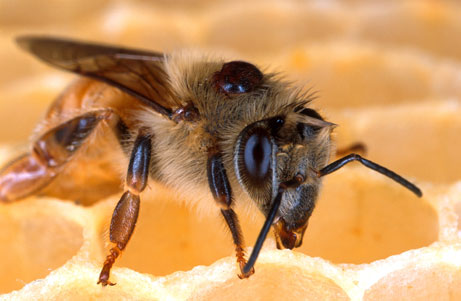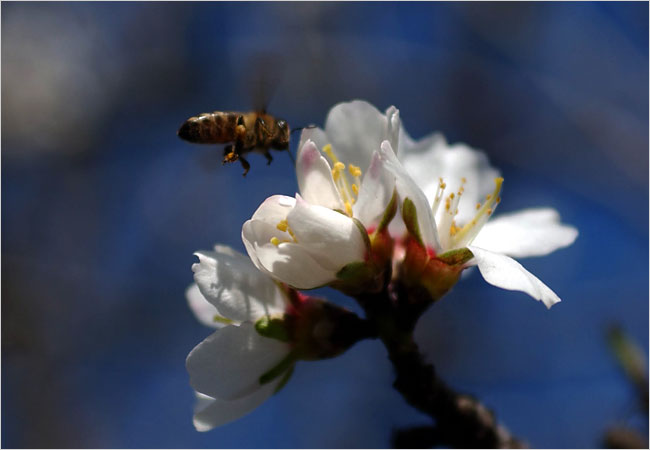
NationalGeographic.com
Recently, there has been a decline in the amount of honeybee colonies worldwide. It has been such a drastic drop in population, affecting 30-90% of hives, that beekeepers, farmers, scientists, and governments are all worried. They have a right to be worried, because bees pollinate 1/3 of the total crops in the U.S., accounting for $15 billion annually. In fact, everyone should be worried, as bees are the main pollinator for many crops, such as, alfalfa, hay, seed, apples, citrus, and cotton, and are the only pollinator for some crops, such as almonds. Local newspapers and news stations are publicizing local losses, while websites like National Geographic and American Beekeeping Federation are reporting the sweeping loss of bees across the U.S, and foreign news agencies like the BBC are announcing the arrival of Colony Collapse Disorder in Europe. On the internet, blogs are postulating causes ranging from the most preposterous, governments killing bees to control the ever-growing population, to somewhat more rational possibilities of cell phones and genetically modified crops. But, to date, no one knows what is actually causing these die-offs. I asked the class to look at a few articles I found online prior to my presentation. One is from the Congressional Research Service (Johnson, 2007), another one was a research article from Switzerland (Gaigg, 2007), another on GM crops (Latsch, 2007), and a blog reporting a variety of ideas (Kovem, 2007).
References:
Johnson, Renee. 2007. Recent Honey Bee Colony Declines. CRS Report for Congress.
Gaigg, Evi. 2007. “The Big Bee Death.” Brennpunkt.
Latsch, Gunther. 2007. “Collapsing Colonies. Are GM crops Killing Bees?” Der Spiegel.
Koven, Jean- Claude. 2007. “When Bees Disappear, Will Man Soon Follow?.” Omega News.
In the class discussion, everyone agreed that this was an important topic that needed to be looked into because of its possible detrimental effects on the economy and society. But, when asked whether the human population can survive without bees, there was some debate. It was argued that humans could find some other way to pollinate their crops, some other insect or tech fix, or just live without those crops that rely on bees for pollination. On the other hand, it was also argued that so much would be affected by the disappearance of bees that our ecosystem might be in jeopardy. For instance, with the decrease in alfalfa and other crops that are fed to animals, our meat supply would also decrease. The class didn’t accept the more radical theories that GM crops and electromagnetic waves were to blame. They believed that if it were one of those things, the effects would have been seen long ago. Cell phones have been around for a long time and the sharp decline in bee populations is a recent occurrence. They viewed the GM crops argument as weak because there are no GM crops in some areas where the CCD is occurring. Also, the experiments that were done to test the GM crops involved crops that had a much higher toxicity than most. The class thought it more likely that the problem was due to a natural cause, such as a parasite or fungus. Everyone agreed that more research is needed, and fast!

New York Times .com